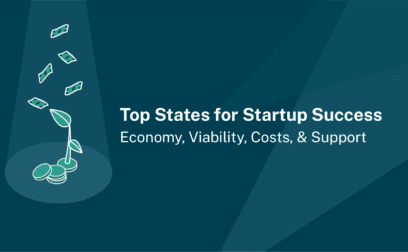TABLE OF CONTENTS
Page written by Ashlyn Brooks. Last reviewed on May 7, 2025. Next review due October 1, 2026.

Revenue-based business loans are becoming a go-to option for growing companies that generate consistent monthly revenue but want to avoid the rigid terms and qualification barriers of traditional debt. These loans offer flexible repayment structures and are tailored to businesses in dynamic industries like e-commerce, SaaS, and online retail.
For financial advisors and brokers, understanding this model allows you to introduce clients to funding that adjusts with business performance. This also provides a buffer against economic dips or seasonal slowdowns.
Revenue-based business loans (also called revenue-based financing or RBF) are a type of business loan in which repayments are tied to a business’s revenue. Instead of fixed monthly installments, the lender receives a percentage of monthly earnings until the agreed loan amount (plus a fee or multiple) is repaid.
This structure is less about credit history and more about predictable income. It’s a compelling choice for businesses that are growing steadily but aren’t ready—or able—to take on traditional bank debt or offer equity.
The repayment process is structured around the ups and downs of a company’s monthly revenue. Here’s how the model typically works:
Because the model focuses on revenue flow rather than credit scores or collateral, it’s often quicker to secure compared to traditional loans.
There are three main benefactors in revenue-based financing, but pretty much any industry that meets these same situations we look at below may make a good candidate.
Startups that have moved beyond the seed stage and are generating regular income but may not yet qualify for large bank loans can use revenue-based loans to fund expansion without diluting equity.
Online retailers, especially those with seasonality or fluctuating order volumes, benefit from the flexibility of repayments that scale with sales. This model aligns especially well with businesses that experience Q4 peaks and slower Q1s.
With recurring monthly income, SaaS businesses are ideal candidates. Lenders can forecast future revenue, making approval faster and more data-driven.
Not suitable for all industries: Businesses with inconsistent or low margins may struggle to maintain sustainable repayments.
| Attribute | Revenue-Based Loans | Traditional Business Loans |
|---|---|---|
| Repayment Structure | Percent of monthly revenue | Fixed monthly payments |
| Collateral Requirement | Often unsecured | Often requires collateral |
| Credit Score Importance | Less important | Highly important |
| Funding Speed | Fast (days) | Moderate to slow (weeks to months) |
| Flexibility | High | Low |
| Cost Predictability | Variable | Fixed |
Repayments don’t work exactly as a traditional repayment plan would. Instead, you repay a portion of your earnings each month, meaning the amount adjusts based on how your business is performing. This setup ensures that slower months don’t place additional financial strain on your operations, and stronger months help you pay off the loan faster.
The repayment amount is a percentage of gross revenue each month. This could range from 5% to 25%, depending on business size, industry, and lender policies.
There’s no set loan term in the traditional sense. The loan is paid off once the total repayment cap is met, often within 6 to 18 months, but that timeline flexes with business performance.
If a business has a slow sales month, the repayment amount drops proportionally. This protects cash flow and reduces pressure during off-peak seasons.
While revenue-based business loans are more accessible than traditional financing, lenders still need assurance that your business has the capacity to repay. Because repayments fluctuate with your earnings, lenders focus on your revenue consistency, operational health, and growth potential, not just your credit score.
The loan amount is based on your monthly/annual recurring revenue. For example, if you earn $100,000 in monthly recurring revenue, you may be approved for up to a multiple of that amount, such as 4-7 times. (100,000 x 4-7 = $400,00- $700,000).
Why? Investors/lenders need to see that you’ve been consistently bringing in revenue, of course, so they know you can repay your loan. These thresholds are in place to ensure that your business has a solid enough financial foundation to handle variable repayments. A short or volatile revenue history could signal too much risk.
Instead of relying heavily on credit scores, lenders dig into performance indicators that reflect your business’s health and growth trajectory:
Revenue-based lenders typically don’t require physical assets like property or equipment as security. That’s because repayment is directly linked to your revenue and often collected automatically from your sales or bank account. In this model, the lender’s assurance comes from your ongoing cash flow, not your balance sheet.
This approach makes revenue-based loans especially appealing for asset-light businesses, such as e-commerce brands or digital service providers, that may not have traditional collateral but maintain healthy, consistent revenue streams.
For some businesses, revenue-based financing might not be the right fit. Some companies may have high but irregular revenue or operate with very slim margins, which doesn’t yield well for this type of repayment model. Also, if you have a business that relies heavily on one or two large invoices or experiences unpredictable sales cycles, revenue-based loans can become difficult to manage.
Here are other options to consider:
A traditional loan structure with fixed payments over a set period. Term loans work well for businesses that:
Merchant cash advances involve a lump-sum payment repaid through a percentage of daily card sales. While similar in repayment structure to revenue-based financing, merchant cash advances are typically:
They’re often used for short-term cash needs but should be considered carefully due to cost.
With invoice financing, you borrow against your unpaid invoices to unlock cash tied up in receivables. It’s best for:
This model helps smooth out working capital without taking on traditional debt.
Here at Swoop, we want you to know all of your options, and we’re here to provide you with every solution that’s at your disposal. Our platform makes it easy to explore if revenue-based business loans are a good fit for your business. With access to a wide network of lenders and tailored funding matches, you can:
Check available business loans through our dashboard to see what’s on offer and register to get matched with flexible revenue-based lenders. Whether your goal is scaling a product line, hiring talent, or riding out a seasonal dip, revenue-based loans could offer the smart capital you need when you need it.
Ashlyn is a personal finance writer with experience in business and consumer taxes, retirement, and financial services to name a few. She has been published in USA Today, Kiplinger and Investopedia.
Swoop promise
At Swoop we want to make it easy for SMEs to understand the sometimes overwhelming world of business finance and insurance. Our goal is simple – to distill complex topics, unravel jargon, offer transparent and impartial information, and empower businesses to make smart financial decisions with confidence.
Find out more about Swoop’s editorial principles by reading our editorial policy.
Related pages
Get your free Revenue-based financing quote today
Join the 95,000+ businesses just like yours getting the Swoop newsletter.
Free. No spam. Opt out whenever you like.
Kingfisher Way, Silverlink Business Park, Newcastle upon Tyne, NE28 9NX, UK
View in Google Maps35 Bull Street, Lewis Building, Birmingham B4 6AF, UK
View in Google MapsAberystwyth Innovation and Enterprise Campus
Gogerddan Campus
Aberystwyth University
Ceredigion
SY23 3EE
Dogpatch Labs, The CHQ Building, Custom House Quay, Dublin, Ireland
View in Google MapsSuite 801, Level 8, 84 Pitt Street, Sydney, NSW 2000, Australia
View in Google Maps43 W 23rd St, New York, NY 10010, United States
View in Google Maps21 Dreyer Street, Cape Town, South Africa, 7708
View in Google MapsClever finance tips and the latest news
Delivered to your inbox monthly
Join the 95,000+ businesses just like yours getting the Swoop newsletter. Free. No spam. Opt out whenever you like.




